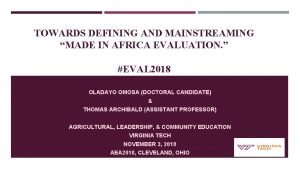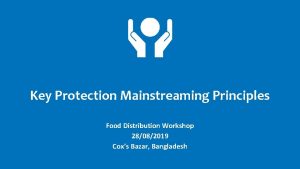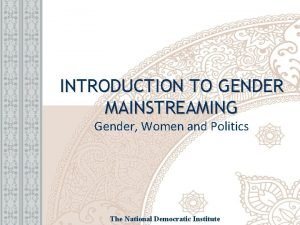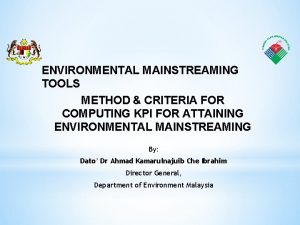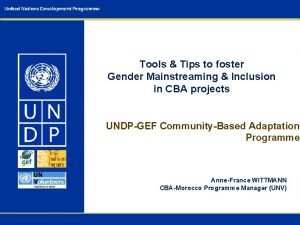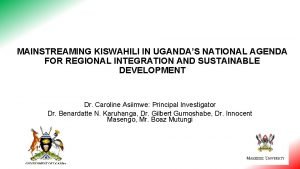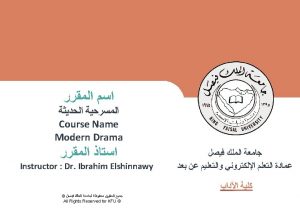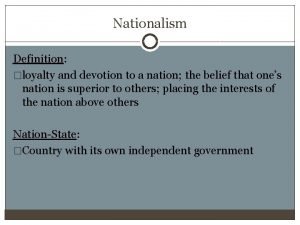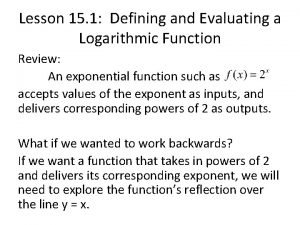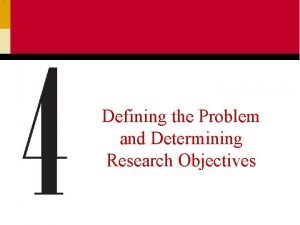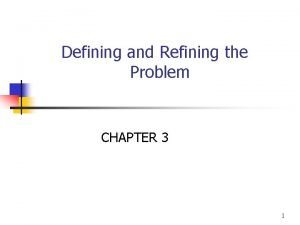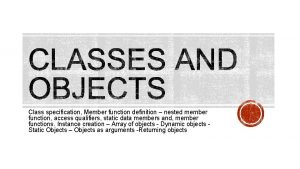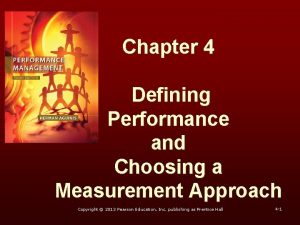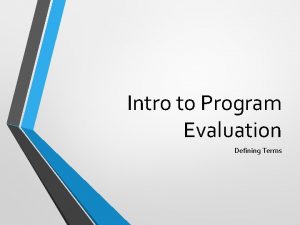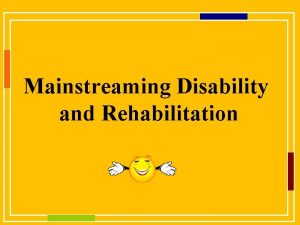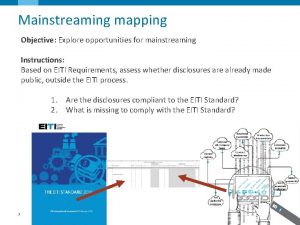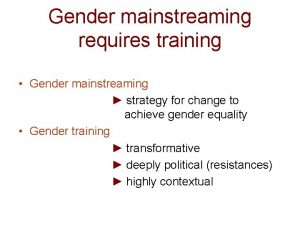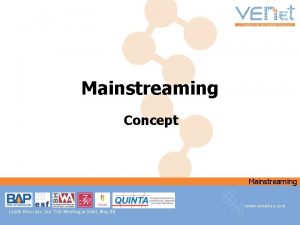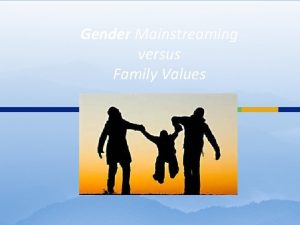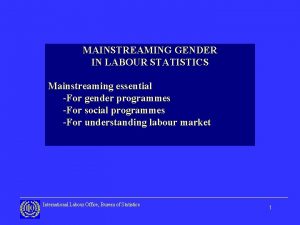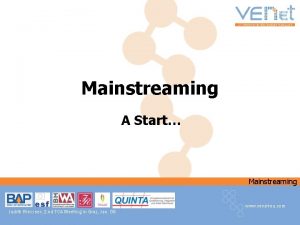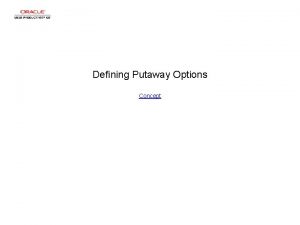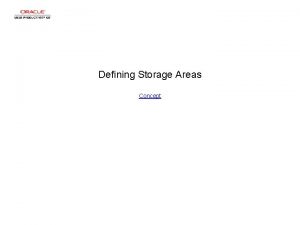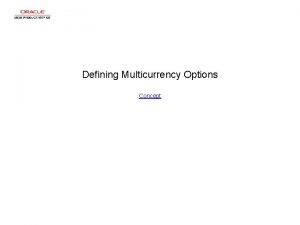TOWARDS DEFINING AND MAINSTREAMING MADE IN AFRICA EVALUATION





















- Slides: 21

TOWARDS DEFINING AND MAINSTREAMING “MADE IN AFRICA EVALUATION. ” #EVAL 2018 OLADAYO OMOSA (DOCTORAL CANDIDATE) & THOMAS ARCHIBALD (ASSISTANT PROFESSOR) AGRICULTURAL, LEADERSHIP, & COMMUNITY EDUCATION VIRGINIA TECH NOVEMBER 3, 2018 AEA 2018, CLEVELAND, OHIO

BACKGROUND/PROBLEM Before we start talking, let us decide what we are talking about. −Socrates, in Plato’s Phaedrus

BACKGROUND/PROBLEM Two-Pronged: Ø Instrumental Grounds: Imported Western evaluation methods may in fact lack validity and lead to bad development outcomes Ø Symbolic Grounds: May reify subjugation and cultural hegemony, in the vein of neo-imperialism and the ‘colonization of the minds. ’ Ø Problem addressed in recent years through the development of the “Made in Africa Evaluation” (MAE) concept.

MAE/CRE CONCEPT Ø MAE is described as the promotion and adaptation of an African-rooted evaluation framework by identifying and developing a uniquely African approach to evaluation. Ø MAE has conceptual and practical Overlap with Cultural Responsive Evaluation (CRE) Ø Chilisa’s (2015) synthesis paper moved the field towards conceptualizing MAE to prevent it from becoming an empty buzzword. Ø However, her efforts fell short of offering a concise definition around which some consensus may arise. As such, there is a need to more clearly define MAE.

PURPOSE OF STUDY Building on Chilisa’s foundational work, the purpose of this study is twofold: Ø To develop a consensus on the definition of MAE.

RESEARCH QUESTIONS Overall, the study aims to address the following research questions: Ø How do thought leaders in African evaluation define Made in Africa Evaluation?

THE AFRICAN EVALUATIO N TREE METAPHOR Figure 1: The African Evaluation Tree Metaphor Adapt from Chilisa 2015

METHODS Ø Multiple Methods Approach Ø Common evaluation concepts/ideas related to CRE are identified Ø MAE journal articles/literature are identified and selected Ø The identified ideas was used as evaluative lens (Conceptual/Concept Analysis). Ø Delphi Technique will be used to build consensus Ø 17 Participants purposively selected (subject to their willingness to participate) Ø 7 Participants responded and participated Ø Participants email was obtained from publicly available databases. Ø Stages of the Delphi Technique: q Round One Questionnaire q Round One Follow-Up q Round Two Questionnaire

TABLE 1: COMMON CONCEPTS/IDEAS ASSOCIATED WITH CRE S/N 1 2 3 4 5 6 7 8 Identified Evaluation Concepts/Ideas/Descriptions Related to CRE Power relations Evaluation as way of life Participatory evaluation Adapting evaluation to lifestyle Africa led or Afro-centric evaluation Indigenous evaluation Localized knowledge Challenging western worldviews

TABLE 2: SOURCE/DESCRIPTION OF LITERATURE FOR THE CONCEPTUAL ANALYSIS S/N Title Author(s) Source Year 1 Developing an African-rooted program evaluation approach Fanie Cloete African Journal of Public Affairs, 9(4), 55 -77 2016 2 A synthesis paper on the made Bagele Chilisa in Africa evaluation concept. African Evaluation Association Afr. EA Website (www. afrea. org) 2015 3 Historical development & practice of evaluation 4 Made in Africa Evaluation: Uncovering African Roots in Evaluation Theory and Practice Mouton, C. , Rabie, Evaluation management in 2014 B. , Cloete, F. , & South Africa and Africa (pp. De Coning, C 28 -78). Stellenbosch: African Sun Media Chilisa, B. , & Paper Presented at the 2012 Malunga, C. Bellagio Conference.

TABLE 3: ADAPTED/EXCERPTED STATEMENTS TO BE RATED (WITH THEIR SOURCES) Statements # Statement Descriptions S 1 Questioning evaluations that show successes of projects while the reality is completely different S 2 Conducting evaluation with an eye towards addressing the macro-micro disconnect and power relations in the community S 3 Conducting evaluation that promotes partnerships of knowledge systems and of evaluation actors and stakeholders S 4 Conducting evaluation with an eye towards challenging Euro-western worldviews and hidden, subtle racist theories embedded in current methodologies. Chilisa (2015), Chilisa & Malunga (2012), and Mouton et al. , (2014). S 5 Conducting evaluation in African settings using localized knowledge, tools and data collection methods S 6 Considering Africa lead and Africa-centric evaluation to mean evaluation done by African professionals only Chilisa (2015), Chilisa & Malunga (2012), and Mouton et al. , (2014). Chilisa (2015) S 7 Conducting evaluation with an eye towards promoting African values and worldviews S 8 Considering the adaptability of my evaluation work to the lifestyle and needs of the African community where evaluand is situated S 9 Considering participatory methodologies as congruent with African worldviews and value system S 10 Conducting evaluation with an eye on building the capacity of participants as co-evaluators and promoting evaluation as a way of life for all Africans Source(s) Chilisa (2015), Cloete (2016), Mouton et al. , (2014). Chilisa (2015), Mouton et al. , (2014) Chilisa (2015) and Cloete (2016) Chilisa (2015), Chilisa & Malunga (2012), and Mouton et al. , (2014). Chilisa (2015), Cloete (2016), and Mouton et al. , (2014). Chilisa (2015) and Cloete (2016)

TABLE 4: RATING FORM FOR ROUND ONE QUESTIONNAIRE Least Important (1) Minimally Important (2) Moderately Important (3) Important (4) Very Important (5) Highly Important (6) # # # #

TABLE 5: SUGGESTED DEFINITION OF MAE BY PARTICIPANTS 1. 2. 3. 4. 5.

ANALYSIS PLAN FOR ROUND ONE DELPHI Ø Statements with higher mean the averaged mean of all the statements is considered more important than statements whose mean ratings are less than the averaged mean. Ø These categories of statements fall into the quadrants I and III in figure 2 below. Ø Typically, these are statements with high means. Ø For this study, consensus is defined as the extent to which agreement had been reached about an item level of importance on an individual survey

ANALYSIS CONT’D Ø Also, using excel, the variance of the rating for each statement is calculated and also the average variance will be calculated. Ø For this study, the averaged variance forms the guiding post or criteria to form a consensus on an item. Ø Consensus is reached if a statement’s variance is less than the averaged variance of all the statements rated in that round. Ø Conversely, a dissensus remains if a statement’s variance is greater than the averaged variance of all the statements rated. Ø Typically, statements with a very low variance show that there is a consensus. This is because there is a very little deviation from the mean.

Figure 2: Possible Categories of Statements with Respect to Averaged Mean and Variability

TABLE 6: SUMMARY STATISTICS OF ALL THE STATEMENTS Statements Variance Mean S 3 3. 71 5. 9 S 4 3. 14 5. 48 S 10 4. 14 5. 14 S 8 3. 86 4. 81 S 9 3. 43 3. 62 S 1 2. 43 2. 95 S 2 2. 43 2. 29 S 6 1. 71 1. 24 S 7 4. 29 0. 90 S 5 5. 14 0. 48

TABLE 7: SUMMARY STATISTICS OF FIVE STATEMENTS ON WHICH CONSENSUS HAS BEEN REACHED IN ROUND ONE Statements # Statements S 1 Questioning evaluations that show successes of projects while the reality is completely different S 2 Conducting evaluation with an eye towards addressing the macro-micro disconnect and power relations in the community Mean 2. 43 Variance 2. 95 2. 43 2. 29 S 5 Conducting evaluation in African settings using 5. 14 localized knowledge, tools and data collection methods 0. 48 S 6 Considering Africa led and Africa-centric evaluation to mean evaluation done by African professionals only Conducting evaluation with an eye towards promoting African values and worldviews 1. 71 1. 24 4. 29 0. 90 S 7

TABLE 8: OVERVIEW OF STATEMENTS TO BE RATED IN ROUND TWO Statements # Statements Description (Remaining Statements from Round One) S 3 Conducting evaluation that promotes partnerships of knowledge systems and of evaluation actors and stakeholders S 4 Conducting evaluation with an eye towards challenging Euro-western worldviews and hidden, subtle racist theories embedded in current methodologies. S 8 Considering the adaptability of my evaluation work to the lifestyle and needs of the African community where evaluand is situated S 9 Considering participatory methodologies as congruent with African worldviews and value system Conducting evaluation with an eye on building the capacity of participants as co-evaluators and promoting evaluation as a way of life for all Africans S 10

TABLE 9: OVERVIEW OF STATEMENTS TO BE RATED IN ROUND TWO CONTD. Statements # B 1 B 2 B 3 Statements Description (Panelists Suggested Statements) Conducting evaluation with sensitivity, understanding, and with the intention of making visible evaluative African knowledge, values, and worldviews. Conducting evaluation in a culturally sensitive and responsive manner, Conducting evaluation studies that are consistent with evaluation standards developed and used by African Evaluation Association (VOPE) and aligned with the professionalization views of a given African country (since Africa is a continent and not a country) B 4 Focusing evaluation on the empowerment of individuals to pursue their own life choices optimally in a given context B 5 Capturing the degree of complexity inherent in the evaluation as accurately as possible.

THANK YOU QUESTIONS, COMMENTS, SUGGESTIONS, & FINAL THOUGHTS
 Relative clauses defining
Relative clauses defining Relative clauses defining and non defining
Relative clauses defining and non defining Relative clauses defining and non defining
Relative clauses defining and non defining Defining and non defining relative clauses in telugu
Defining and non defining relative clauses in telugu Relative clauses
Relative clauses Relative clauses
Relative clauses Made in africa evaluation
Made in africa evaluation Protection mainstreaming principles
Protection mainstreaming principles What is gender mainstreaming?
What is gender mainstreaming? What is gender mainstreaming?
What is gender mainstreaming? Ercmc organization chart
Ercmc organization chart Sex videao
Sex videao Gender mainstreaming
Gender mainstreaming Mainstreaming in swahili
Mainstreaming in swahili Savukku nora money
Savukku nora money Loyalty and devotion towards a nation
Loyalty and devotion towards a nation Lesson 15-1 defining and evaluating a logarithmic function
Lesson 15-1 defining and evaluating a logarithmic function Defining the problem and research objectives
Defining the problem and research objectives Defining performance and choosing a measurement approach
Defining performance and choosing a measurement approach Broad problem area in research examples
Broad problem area in research examples Define member function
Define member function Defining performance and choosing a measurement approach
Defining performance and choosing a measurement approach






